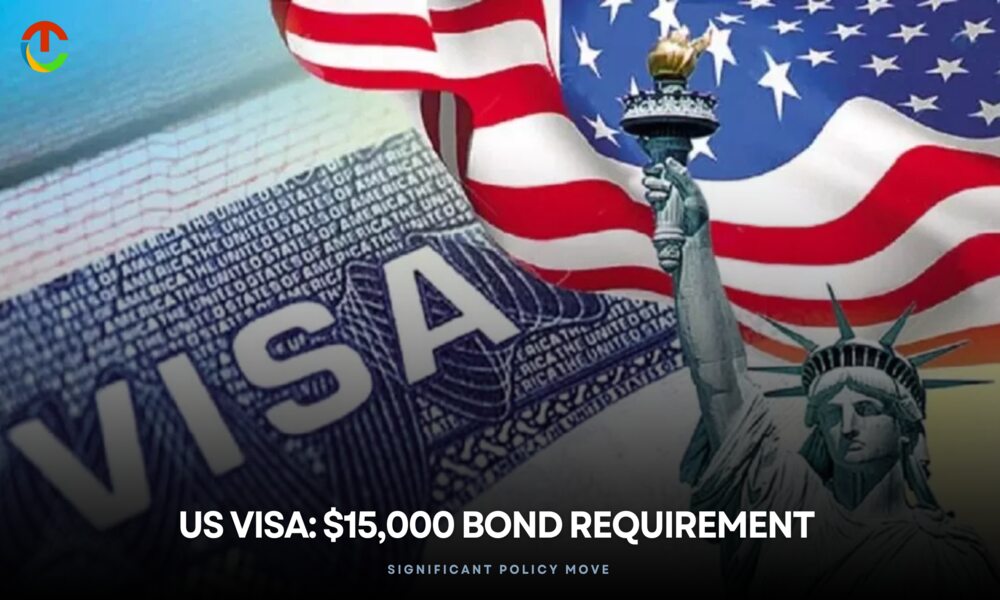The United States introduced a bond requirement of up to $15,000 for select visa applicants, creating broad worry among travelers, immigration groups, and foreign governments. This experimental program, introduced by the US State Department, wants to reduce visa overstays, a recurring problem that has complicated immigration enforcement for years.
The delivery only applies to applicants from countries with historically high rates of visa overstays. These include countries from Africa, Asia, and the Middle East. The program will run for six months and may be extended or changed based on the outcome and feedback from stakeholders.
US Visas Policy Sees Sharp Shift with Financial Barrier
The State Department explained that the bond is not a blanket requirement for all visitors, but rather a targeted enforcement measure. Under the new rule, consular officers may require certain applicants to submit a refundable bond ranging from $5,000 to $15,000. The amount is meant as a financial incentive for making sure that the visa holder leaves the United States before it expires.
This policy change is part of the Trump-era project known as the “Visa Bond Pilot Program,” which was briefly used in 2020 but is now being reintroduced with changes. Although the Biden administration first relaxed many immigration restrictions, this proposal has returned as part of a push to reinforce border controls and address visa backlogs.
While the U.S. government claims this rule will act as a deterrent against visa overstays, immigration experts argue that it may disproportionately affect low-income travelers and hinder tourism and business relations. There’s also concern that it could damage diplomatic relations with some of the targeted countries.
Reactions and Ramifications
Several advocacy groups and foreign governments have criticized the move, calling it discriminatory and counterproductive. Countries like Nigeria, Sudan, and the Democratic Republic of Congo, among others, are reportedly among those impacted, though the U.S. has not released an official list.
Tourism and business groups have warned that this bond requirement could make travel to the U.S. less attractive, especially for small business owners, students, and families. They fear it could discourage legitimate travelers and deepen economic gaps between nations.
The U.S. has insisted that the bond is refundable upon the traveler’s timely departure and compliance with visa terms. However, the procedural clarity and timeline for the refund process have not yet been detailed, leaving many applicants uncertain.
What Lies Ahead?
As the world recovers from pandemic-related disruptions and global movement continues, the United States faces the problem of balancing security and accessibility. The bond rule may change based on data acquired during the six-month period and additional diplomatic input.
For the time being, applicants from high-risk nations should verify with their local US embassy before applying for a visa, and be prepared to pay additional expenses.
US Visas continue to be a vital gateway for students, workers, and tourists. But policies like the $15,000 bond requirement are changing the landscape of American immigration – potentially redefining who gets to enter and on what terms.
Also Read: Are electric scooters safe?





